BMW 2 Series Active Tourer vs Ford Kuga – Vilken modell imponerar mest i vardagen?
Båda modellerna har sina styrkor – men vilken passar dig bättre?
Jämför prestanda, förbrukning, pris och utrymme direkt: BMW 2 Series Active Tourer eller Ford Kuga?
BMW 2er Active Tourer vs Ford Kuga: A Comprehensive Comparison
The automotive market is brimming with options for families and individuals seeking versatile vehicles that blend performance with practicality. Two notable contenders in the MPV and SUV categories are the BMW 2er Active Tourer and the Ford Kuga. While both vehicles offer spacious interiors and advanced technologies, they cater to different preferences. This article explores their technical aspects, performance, and innovative features to help you make an informed choice.
Design and Dimensions
The BMW 2er Active Tourer, designed primarily as a Multi-Purpose Vehicle (MPV), measures 4,386 mm in length, 1,824 mm in width, and 1,576 mm in height. Its compact design makes it ideal for urban navigation while still providing ample interior space for passengers and cargo. The trunk capacity ranges from 406 to 470 liters, depending on the configuration.
In contrast, the Ford Kuga stands as a more traditional SUV. Available in lengths between 4,604 mm and 4,645 mm, and a width of 1,882 mm, it provides a commanding road presence. The Kuga's trunk capacity is slightly smaller at 412 liters but benefits from flexible seating arrangements, making it versatile for various storage needs.
Engine Options and Performance
When it comes to under-the-hood options, the BMW 2er Active Tourer offers a broader range of engines. Available in petrol, diesel, and hybrid configurations, power outputs vary from 122 HP to a staggering 326 HP, accommodating a diverse audience from eco-conscious drivers to those seeking thrill and speed. The Active Tourer's power delivery is smooth, with acceleration from 0-100 km/h in as quick as 5.5 seconds for the top variant.
The Ford Kuga, on the other hand, features petrol and hybrid engines, with power outputs peaking at 243 HP. Acceleration times for the Kuga range from 7.3 to 9.5 seconds, which is respectable, but does not match the range of dynamics offered by the BMW. For drivers who prioritize efficiency, the Kuga's engines provide competitive fuel consumption, with the full hybrid variant achieving an impressive 5.3 L/100 km.
Hybrid Innovations
Both models embrace hybrid technology, catering to environmentally-conscious consumers. The 2er Active Tourer boasts plug-in hybrid options with an impressive electric range of up to 88 km and a battery capacity of 14.2 kWh. This allows for short daily commutes to be tackled solely on electric power, reducing emissions significantly.
Meanwhile, the Ford Kuga offers a traditional hybrid and plug-in hybrid variant, but with a lower electric range of 69 km and a battery pack of 14.4 kWh. This suggests that while the Kuga's hybrids can support shorter journeys electrically, the BMW has the upper hand in offering a more extensive electric-only range, emphasizing its advanced hybrid technologies.
Technology and Safety Features
Neither brand compromises on technology and safety. The 2er Active Tourer is equipped with a cutting-edge infotainment system, featuring a large display, smartphone integration via Apple CarPlay and Android Auto, and a suite of advanced driver assistance systems. Safety ratings reflect BMW's commitment to building secure vehicles, with features such as forward collision warning and adaptive cruise control.
Similarly, the Ford Kuga is loaded with technology, offering a user-friendly touchscreen interface, similar smartphone connectivity, and several driver support features. The Kuga's safety performance is also commendable, with numerous awards for its safety protocols—ensuring peace of mind for families.
Driving Experience
The driving experience in the BMW 2er Active Tourer leans towards sporty. With different driving modes and a responsive chassis, it delivers a dynamic ride that enthusiasts will appreciate. Additionally, the option for all-wheel drive enhances stability and traction, particularly in adverse weather conditions.
The Ford Kuga, while not as performance-oriented, provides a comfortable and smooth drive. Its higher seating position offers good visibility, making it a practical choice for daily driving and family excursions. Front-wheel and all-wheel drive options also give drivers the benefit of versatility, though the driving feel may not be as enthusiastic as that of the BMW.
Conclusion: Which One Wins?
Choosing between the BMW 2er Active Tourer and the Ford Kuga ultimately comes down to individual preferences and needs. If you are looking for a family-oriented vehicle that does not compromise on performance and technology, the 2er Active Tourer stands out as an excellent option with its impressive range of engines and advanced hybrid capabilities.
However, if you prefer a spacious and practical SUV with solid performance and a feature-rich cabin, the Ford Kuga is a formidable competitor, offering great flexibility. Both vehicles have their unique advantages, making them worthy considerations in today’s competitive market.
Nu blir det konkret: de tekniska skillnaderna i detalj
Kostnader och förbrukning: När det gäller ekonomi visar bilarna intressanta skillnader.
BMW 2 Series Active Tourer har ett något prisförsprång – den börjar på 418300 kr, medan Ford Kuga kostar 461600 kr. Skillnaden är ungefär 43330 kr.
Även bränsleförbrukningen visar skillnader: BMW 2 Series Active Tourer klarar sig med 0.90 L och är därmed betydligt snålare än Ford Kuga, som drar 2.80 L. Skillnaden är ungefär 1.90 L per 100 km.
När det gäller räckvidd presterar BMW 2 Series Active Tourer något bättre: Den klarar upp till 85 km, ungefär 17 km mer än Ford Kuga.
Motor och prestanda: Under huven avslöjas vilken modell som är sportigare och vem som är snabbast iväg.
När det gäller motoreffekt har BMW 2 Series Active Tourer ett påtagligt övertag – 326 hk mot 243 hk. Det motsvarar ungefär 83 hk hk mer.
I accelerationen från 0 till 100 km/h är BMW 2 Series Active Tourer märkbart snabbare – 5.50 s mot 7.30 s. Det är ungefär 1.80 s snabbare.
När det gäller toppfart ligger BMW 2 Series Active Tourer i liten grad före – den når 238 km/h, medan Ford Kuga stannar vid 200 km/h. Skillnaden är omkring 38 km/h.
Även vridmomentet skiljer sig åt: BMW 2 Series Active Tourer drar klart kraftigare med 477 Nm mot 240 Nm. Skillnaden är cirka 237 Nm.
Utrymme och praktisk användning: Familjebil eller vardagskompis – vem erbjuder mest plats, flexibilitet och komfort?
Båda bilarna har plats för 5 personer.
När det gäller tjänstevikt är Ford Kuga minimal lättare – 1526 kg mot 1545 kg. Skillnaden är omkring 19 kg.
När det gäller bagageutrymme erbjuder BMW 2 Series Active Tourer något mer plats – 470 L mot 412 L. Skillnaden är omkring 58 L.
Vid maximal lastvolym presterar Ford Kuga nästan omärklig bättre – upp till 1534 L, cirka 79 L mer än BMW 2 Series Active Tourer.
Även lastkapaciteten visar skillnad: Ford Kuga nästan omärklig bättre – 550 kg mot 505 kg. Skillnaden är ungefär 45 kg.
Vårt omdöme: BMW 2 Series Active Tourer visar sig vara dominerar jämförelsen och blir därmed vår DriveDuel Champion!
I den här jämförelsen är BMW 2 Series Active Tourer den mer kompletta allroundbilen.
BMW 2 Series Active Tourer
BMW 2er Active Tourer kombinerar stil och funktionalitet på ett imponerande sätt. Den ger en bekväm körupplevelse med gott om utrymme för både passagerare och bagage. Med sin moderna design och smarta teknologiska lösningar är den ett utmärkt val för familjer på språng.
detaljer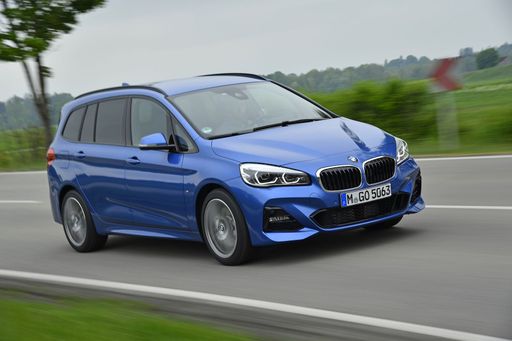 @ press.bmwgroup.com
@ press.bmwgroup.com
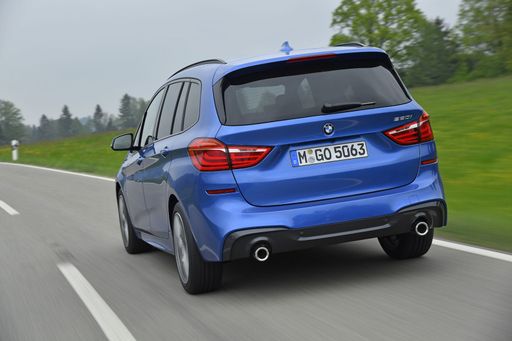 @ press.bmwgroup.com
@ press.bmwgroup.com
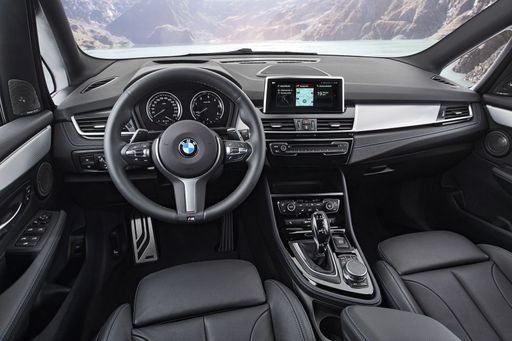 @ press.bmwgroup.com
@ press.bmwgroup.com
 @ press.bmwgroup.com
@ press.bmwgroup.com
Ford Kuga
Ford Kuga har länge varit en favorit bland SUV:ar, tack vare sin stilrena design och praktiska utrymmen. Den erbjuder en balanserad körupplevelse som passar både stadskörning och längre äventyr. Med fokus på komfort och säkerhet är Kuga ett utmärkt val för familjer och aktiva livsstilar.
detaljer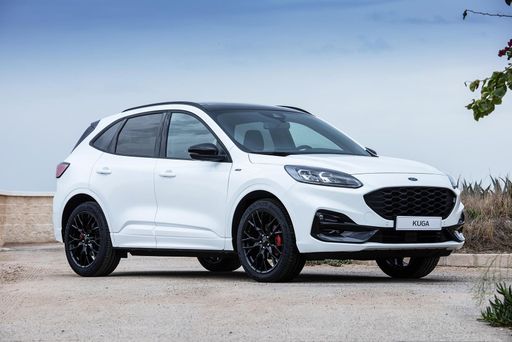 @ kuga.fordpresskits.com
@ kuga.fordpresskits.com
 @ kuga.fordpresskits.com
@ kuga.fordpresskits.com
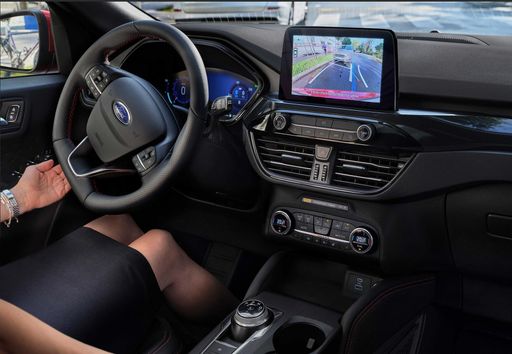 @ kuga.fordpresskits.com
@ kuga.fordpresskits.com

|

|
|
|
|
Kostnader och förbrukning |
|
|---|---|
|
Pris
418300 - 647100 kr
|
Pris
461600 - 624500 kr
|
|
Förbrukning L/100 km
0.9 - 6.2 L
|
Förbrukning L/100 km
2.8 - 6.8 L
|
|
Förbrukning kWh/100 km
-
|
Förbrukning kWh/100 km
-
|
|
Elektrisk räckvidd
85 km
|
Elektrisk räckvidd
68 km
|
|
Batterikapacitet
14.20 kWh
|
Batterikapacitet
1.1 - 14.4 kWh
|
|
CO2
20 - 140 g/km
|
CO2
55 - 154 g/km
|
|
Tankvolym
45 - 54 L
|
Tankvolym
42 - 54 L
|
Mått och kaross |
|
|---|---|
|
Karosstyp
MPV
|
Karosstyp
SUV
|
|
Säten
5
|
Säten
5
|
|
Dörrar
5
|
Dörrar
5
|
|
Tjänstevikt
1545 - 1920 kg
|
Tjänstevikt
1526 - 1859 kg
|
|
Bagageutrymme
406 - 470 L
|
Bagageutrymme
412 L
|
|
Längd
4386 mm
|
Längd
4604 - 4645 mm
|
|
Bredd
1824 mm
|
Bredd
1882 mm
|
|
Höjd
1576 mm
|
Höjd
1673 - 1681 mm
|
|
Max bagageutrymme
1370 - 1455 L
|
Max bagageutrymme
1534 L
|
|
Lastkapacitet
465 - 505 kg
|
Lastkapacitet
541 - 550 kg
|
Motor och prestanda |
|
|---|---|
|
Motortyp
Laddhybrid, Bensin, Bensin Mildhybrid, Diesel, Diesel Mildhybrid
|
Motortyp
Bensin, Fullhybrid, Laddhybrid
|
|
Växellåda
Automatisk
|
Växellåda
Manuel, Automatisk
|
|
Växellådsdetalj
Automatisk dubbelkoppling
|
Växellådsdetalj
Manuell växellåda, CVT, Automatisk växellåda
|
|
Drivtyp
Fyrhjulsdrift, Framhjulsdrift
|
Drivtyp
Framhjulsdrift, Fyrhjulsdrift
|
|
Effekt (hk)
122 - 326 hk
|
Effekt (hk)
150 - 243 hk
|
|
Acceleration 0-100 km/h
5.5 - 10.3 s
|
Acceleration 0-100 km/h
7.3 - 9.9 s
|
|
Maxhastighet
195 - 238 km/h
|
Maxhastighet
195 - 200 km/h
|
|
Vridmoment
230 - 477 Nm
|
Vridmoment
240 Nm
|
|
Antal cylindrar
3 - 4
|
Antal cylindrar
3 - 4
|
|
Effekt (kW)
90 - 240 kW
|
Effekt (kW)
111 - 178 kW
|
|
Motorvolym
1499 - 1998 cm3
|
Motorvolym
1496 - 2488 cm3
|
Allmänt |
|
|---|---|
|
Modellår
2024
|
Modellår
2025
|
|
CO2-effektivitetsklass
B, E, D
|
CO2-effektivitetsklass
E, D, B
|
|
Märke
BMW
|
Märke
Ford
|
Vilka drivlinor finns för BMW 2 Series Active Tourer?
Tillgänglig som Fyrhjulsdrift eller Framhjulsdrift.
De visade priserna och uppgifterna är uppskattningar baserade på tyska listpriser och kan variera beroende på land. Denna information är inte juridiskt bindande.
